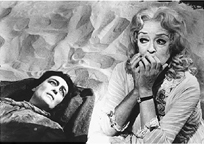

There are movies here that did well with the general public but not with critics, and vice versa. There are movies that did well with both. There are some, like Love Crimes, a particular favorite of mine, that bombed with just about everyone. So, you might ask, what are the standards on this here list?
Robert Bresson had certain rules of order, mostly having to do with keeping the acting and drama muted. Whatever rules Robert Aldrich followed certainly had very little to do with muting anything. The point is, each of them did what he was good at, came at things from his own angle, guided by a unique set of influences and a unique psychology.
In the same way, the viewer, whether a film-schooled aficionado or an auto-plant worker with a couple of hours to kill, is coming to the movie with his or her own set of needs. The critic could say that through careful, and dare I say rigorous, study, personal need can be replaced by universal aesthetic principle, but that’s a bit much. More likely, in the course of said study, one set of personal needs was replaced or modified by another.
Art is what artists do. This may seem obvious, but - given the attempts by entrepreneurs and commentators to commandeer the process - it’s not. Commercial and aesthetic standards are established, rejected, and reestablished in altered forms. Obviously the influence on art of money, critic preference and prevailing zeitgeist is considerable, but there's no pole star for art, just a meteor from here and a meteor from there - whether the sober high art of Bergman’s Persona or the wild pulp art of Bava's The Whip and the Body - bright and unpredictable.
Standards? Some people have worked that out. I'm not one of them. You might as well ask, what are my standards for dreaming?
It may be true that we need universal standards, but it doesn't necessarily follow that there are such things. It simply means we have a strong incentive for concocting dogmas that satisfy the need.
